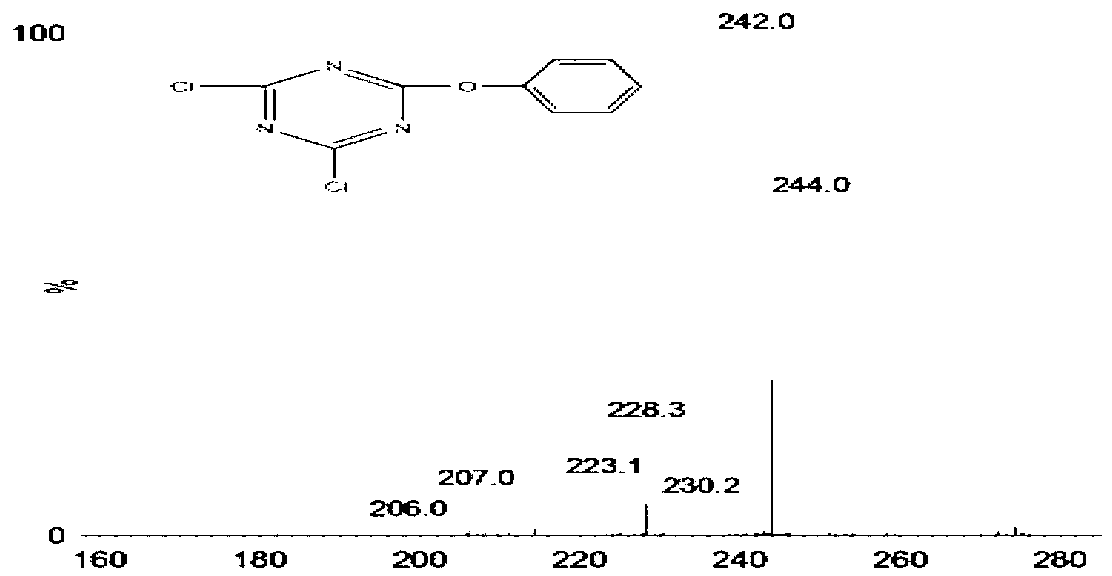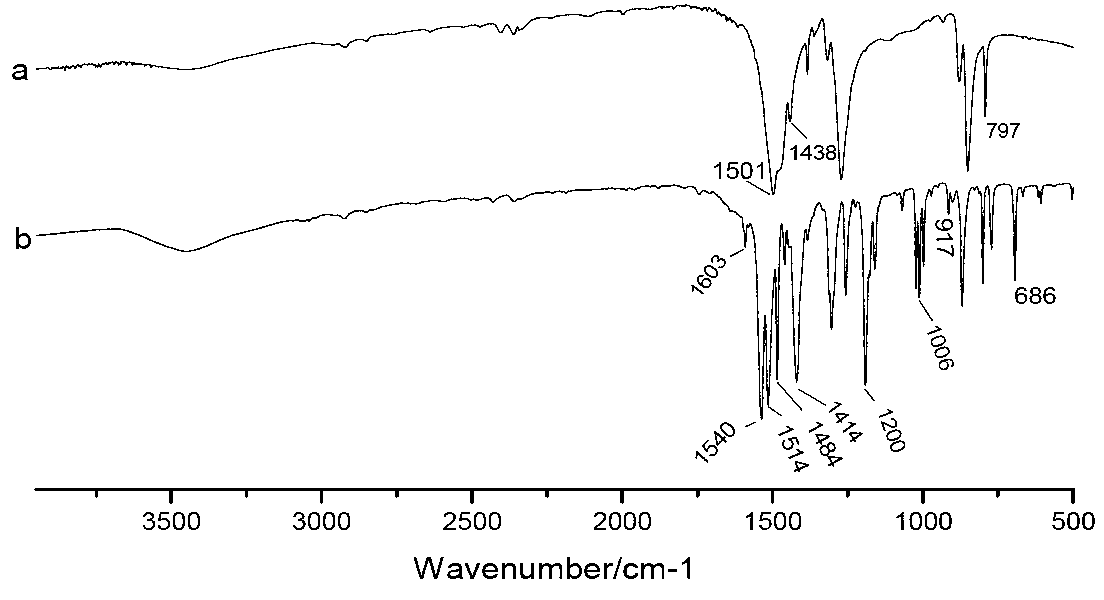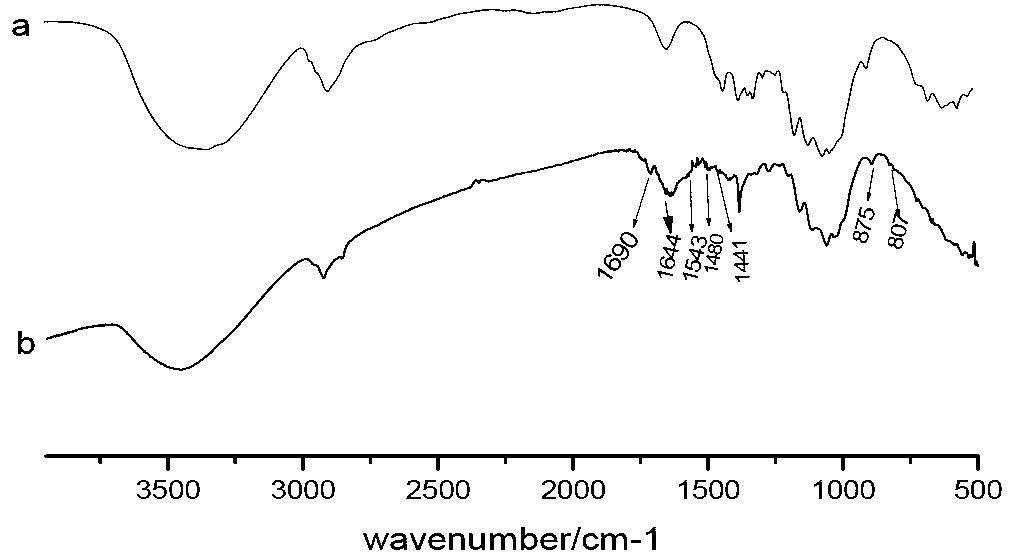Method for improving hydrolytic efficiency of cellulose
A cellulose and efficiency technology, applied in the field of improving the efficiency of cellulose hydrolysis, can solve problems such as affecting the yield of total sugar
- Summary
- Abstract
- Description
- Claims
- Application Information
AI Technical Summary
Problems solved by technology
Method used
Image
Examples
Embodiment 1
[0029] (1) Weigh 4 parts of cyanuric chloride into the reactor, add 40 parts of dichloromethane, and then stir in an ice-water bath; use 30 parts of 2 parts of phenol, 2 parts of anhydrous sodium carbonate and 0.1 part of anhydrous sodium sulfite After the water is dissolved, it is slowly dripped into the above system, and it lasts for 1 hour. Continue to react for 2 hours, stop the reaction, pour it into a separatory funnel, and let it stand for 1 hour. The crude product was obtained from methane, and the crude product was recrystallized from THF-water to obtain a white solid with a yield of 65.5%.
[0030] (2) Weigh 2 parts of cellulose into the reactor, add 10 parts of acetone; weigh the relative molar content (based on glucose ring) of 1 / 40 parts of modifier, and add 30 parts of acetone to dissolve it under stirring, And slowly drop it into the above system; use 10wt% NaOH as a catalyst, react at a temperature of 40°C for 3 hours, the product is filtered by suction and was...
Embodiment 2
[0033] (1) Weigh 2 parts of cyanuric chloride into the reactor, add 20 parts of dichloromethane, and then stir in an ice-water bath; use 30 parts of 1 part of phenol, 1 part of anhydrous sodium carbonate and 0.1 part of anhydrous sodium sulfite After the water is dissolved, it is slowly dripped into the above system, and it lasts for 1 hour. Continue to react for 2 hours, stop the reaction, pour it into a separatory funnel, and let it stand for 1 hour. The crude product was obtained from methane, and the crude product was recrystallized from THF-water to obtain a white solid with a yield of 75.5%.
[0034] (2) Weigh 2 parts of cellulose in the reactor, add 10 parts of acetone; weigh the relative molar content (based on glucose ring) as 1 / 20 modifier, add 30 parts of acetone to dissolve it under stirring, and Slowly drop into the above system; use 10wt% NaOH as a catalyst, react at a temperature of 40°C for 3 hours, the product is filtered by suction and washed with deionized w...
Embodiment 3
[0037] (1) Weigh 1 part of cyanuric chloride into the reactor, add 10 parts of dichloromethane, and then stir in an ice-water bath; use 30 parts of 1 part of phenol, 1 part of anhydrous sodium carbonate and 0.1 part of anhydrous sodium sulfite After the water is dissolved, it is slowly dripped into the above system, and it lasts for 1 hour. Continue to react for 2 hours, stop the reaction, pour it into a separatory funnel, and let it stand for 1 hour. The crude product was obtained from methane, and the crude product was recrystallized with tetrahydrofuran-water to obtain a white solid with a yield of 60.5%.
[0038] (2) Weigh 2 parts of cellulose into the reactor, add 10 parts of acetone; weigh the relative molar content (based on glucose ring) of 1 / 5 parts of modifier, and add 30 parts of acetone to dissolve it under stirring, And slowly drop it into the above system; use 10wt% NaOH as a catalyst, react at a temperature of 40°C for 3 hours, the product is filtered by suction...
PUM
 Login to View More
Login to View More Abstract
Description
Claims
Application Information
 Login to View More
Login to View More - R&D
- Intellectual Property
- Life Sciences
- Materials
- Tech Scout
- Unparalleled Data Quality
- Higher Quality Content
- 60% Fewer Hallucinations
Browse by: Latest US Patents, China's latest patents, Technical Efficacy Thesaurus, Application Domain, Technology Topic, Popular Technical Reports.
© 2025 PatSnap. All rights reserved.Legal|Privacy policy|Modern Slavery Act Transparency Statement|Sitemap|About US| Contact US: help@patsnap.com



